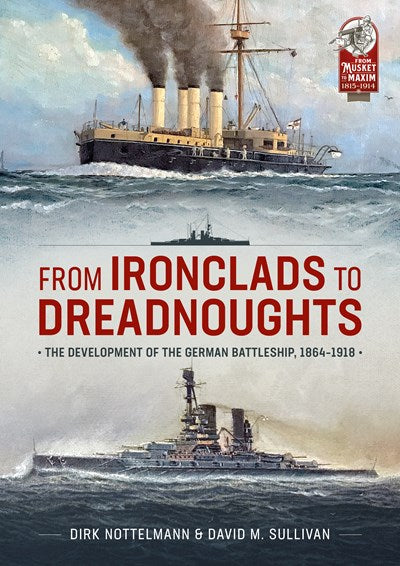The book provides a vastly illustrated in-depth history of the development of the (later) so-called ‘battleship’ in the Prussian and subsequent Imperial German Navy, from its early beginnings to the last projects, like it never had been told in this depth in a single book before.
In 1864, the Prussian Navy, core element of what was to become the Imperial German Navy in future, acquired its first ironclad vessels from Great Britain and France. To that point, it had existed as a rather insignificant force for more or less 20 years, consisting mainly of a handful of gunboats, corvettes, and other small craft. Then, within the subsequent fifty years, from 1864 to 1914, the Navy would rise from a practical non-existence to a respectable force in various aspects, in some regards second to none. In this, she truly reflected the ascent of Germany as a technical power, since its unification in 1871. But this could not be accessed by technical knowledge alone - it required the strong will to achieve a pre-set goal. Until 1897, this determination was lacking on the naval and even more on the political side, aside the fulfillment of the initial ‘fleet-inauguration-plan’ by Albrecht von Stosch, from 1873 to 1883, while the industrial background became increasingly available. Even the expressed will of the new Emperor Wilhelm II, since his ascent to the throne in 1888, to push naval matters forward, didn’t suffice in gaining substantial results; even more so as he, for himself, was undecided about the best way to proceed. The result was the parliament’s increasing unwillingness to grant a constant flow of substantial funds, as long as no proper direction was recognizable.
The story up to that point, with the related acquisition of ships, first from abroad, later exclusively from German shipyards, and their particular histories, is covered by the first four chapters, while the fundamental changes after the accession of Alfred (von) Tirpitz to the post of ‘Staatssekretär des Reichs-Marine-Amts’ (‘naval minister’, in fact) in 1897, and the implementation of his subsequent so-termed ‘naval laws’, are pointed out in detail in the remaining six.
Especially, in these chapters the focus is laid on telling the history of the individual classes of ships, from their inception to the wide variety of influences during the design process, a brief overall history – extended in case of special (war) experiences – to their individual ends. Each of these chapters is introduced by a brief narrative of the political/technical environment, into the individual class would be constructed.
All of this is accompanied by an abundant outfit of illustrations, photos, maps and tables, many of them never been issued before, stemming from the vast archival material held either in the Federal Archives at Freiburg, or collected within several private archives – including the authors’ – within many years of research.

